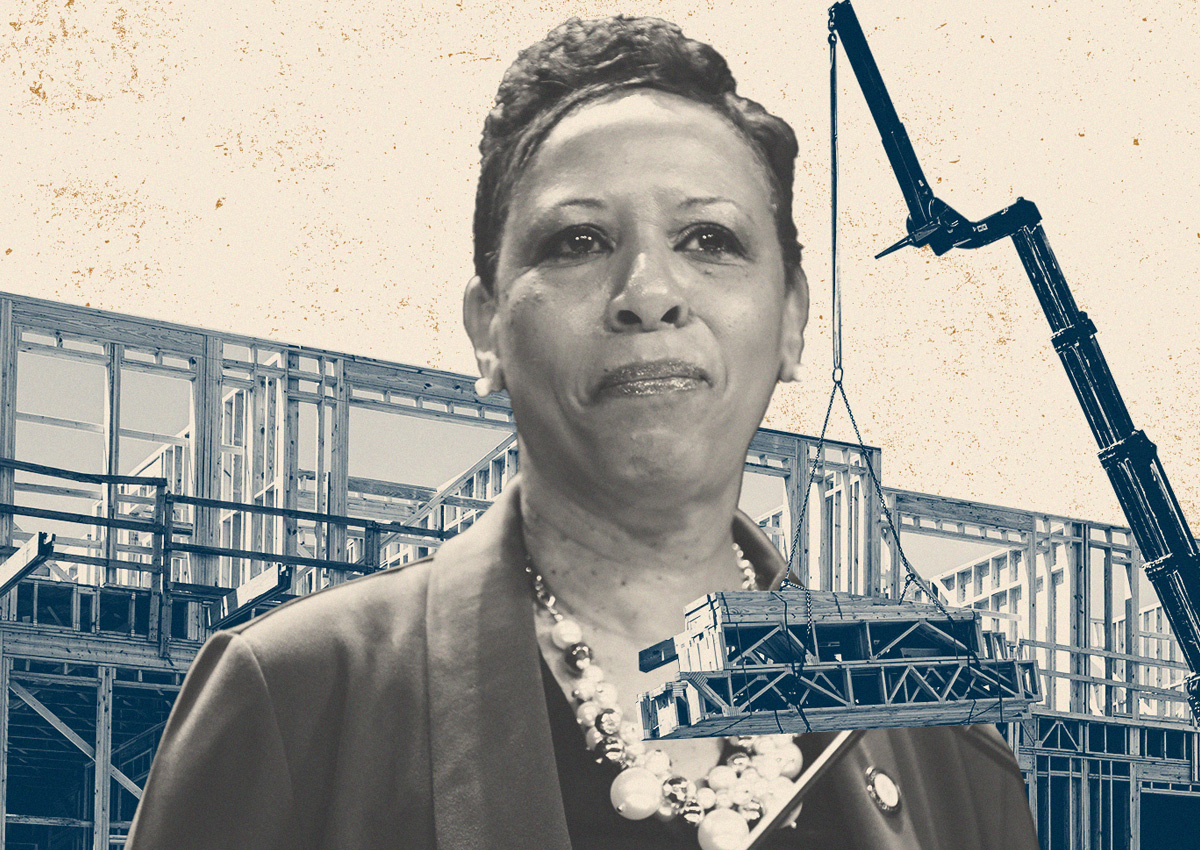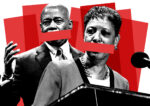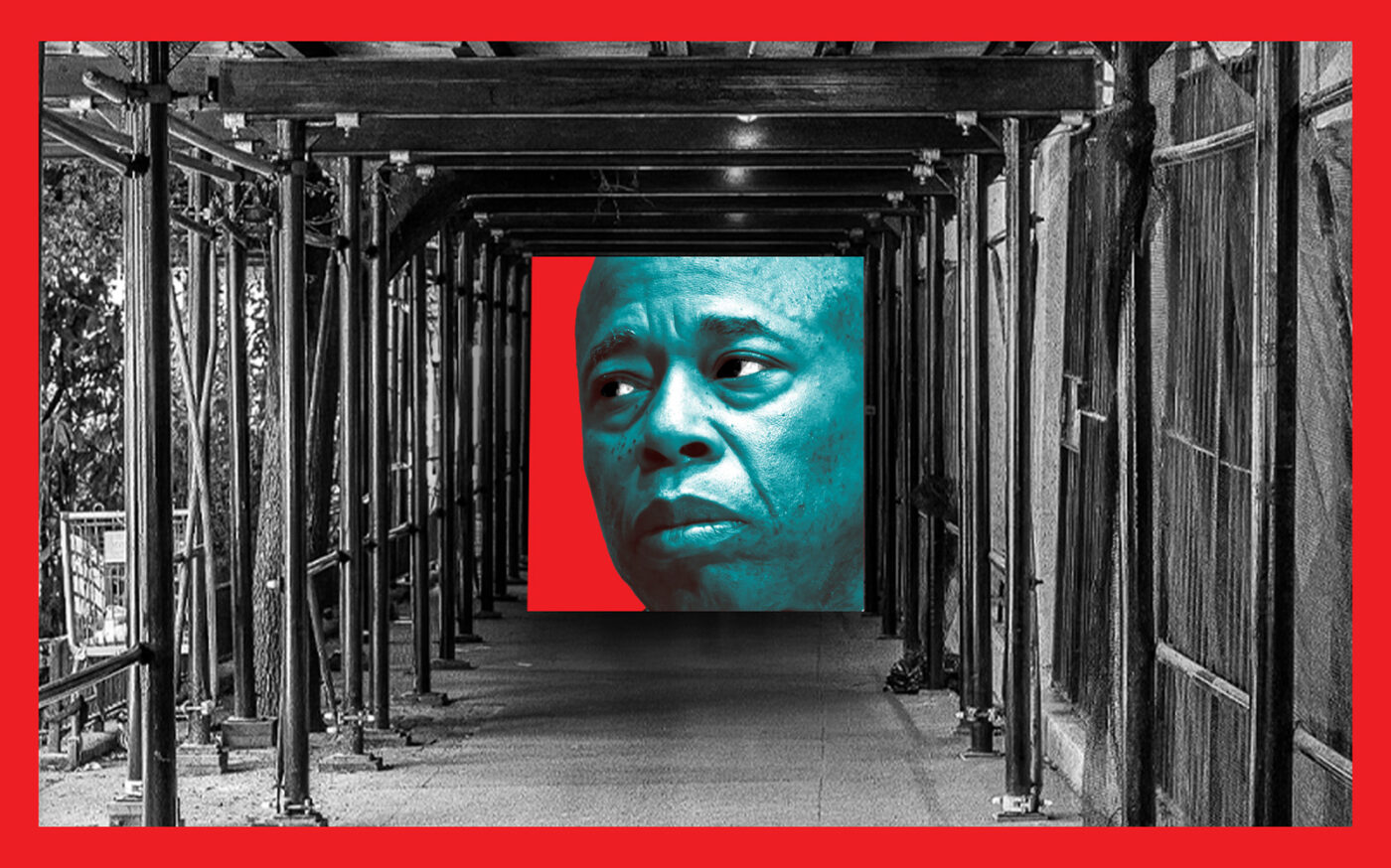When the Adams administration unveiled an ambitious plan Monday to unshackle the city from sidewalk sheds, I felt compelled to text Jimmy Oddo, the buildings commissioner.
“If you end the scourge of sidewalk sheds,” I wrote, “you can skip the mayoralty and go directly to king.”
Then I realized that should Oddo and his City Hall colleagues succeed, Mayor Eric Adams would get the credit.
So if Oddo were king, Adams, I suppose, could be elevated to God. He might deserve the promotion.
Mayors, historically, have been afraid to do anything that might be portrayed as weakening the shed law, lest they be blamed for a subsequent tragedy. If you don’t think a 30-second campaign ad about that could damage a politician’s career, see Dukakis, Mike.
That said, we elect people to fix problems. And sidewalk sheds are unquestionably a problem in New York City. They have become ubiquitous eyesores, depressed New York’s economy and quality of life and cost building owners tens of billions of dollars, without necessarily making the city safer.
“On any given day, more than 25 percent of our district’s sidewalks and public spaces are covered by construction sheds and scaffolding,” the executive director of the business improvement district for Flatiron and Nomad said in the mayor’s press release.
Some sheds have remained up for years; one, at 409 Edgecombe Avenue in Harlem, has been plaguing the block since April 27, 2006.
The story of sidewalk sheds in New York is an example of the road to Hell being paved with good intentions. It began in 1979, when Barnard student Grace Gold was killed by a falling chunk of facade, and her sister Lori embarked on an admirable crusade to ensure no one else would suffer such a fate.
Elected officials were eager to help. The following year they passed Local Law 11, requiring buildings six stories or taller to be inspected every five years and, if necessary, clad with a sidewalk shed until repairs were made. The city expanded the law in 1998 to include side and rear facades.
A small number of New Yorkers have since been killed by falling debris, including two in consecutive months just before the pandemic, but none while standing under a shed. That doesn’t mean the law was a success.
Anyone trying to calculate lives saved would have to factor in deaths of workers constructing the scaffolding and sheds required by the law. Some homicides (or drug deals that led to homicides) that occurred under sheds might not have happened had there been a clear line of sight to the sidewalk.
Economic hardship, such as that caused by small businesses failing when hidden by sidewalk sheds, is known to shorten lifespans. A 2020 study found people who have recently undergone severe financial strain attempt suicide 20 times as often as people who haven’t.
If an accurate study were possible and someone bothered to do it, we could try to determine if more lives would have been saved by some other use of the time and money than Local Law 11 has consumed.
In 2018, Crain’s reported that $1.2 billion a year was being spent on sidewalk sheds and the scaffolding above them. We can estimate that from 2011 to 2020, the total was about $12 billion, not including what the city spent on enforcement. During that period, 1,260 pedestrians were killed by vehicles, the most of any U.S. city.
If that money had been spent to protect pedestrians from vehicles, surely more New Yorkers would be alive today.
That is not to say that we should not protect New Yorkers from falling debris. But we must do so efficiently and effectively, as other cities seem to. Before we give the Adams administration too much credit, it does appear that a major focus of its new plan is to make it prohibitively expensive to keep sheds up rather than fix the facade issues that required them. That is logical, but not especially creative, and might come with side effects of its own.
On the plus side, the mayor’s plan includes alternatives, such as netting, and promises to explore regulatory reductions that do not affect safety.
The real challenge is to make the law proportional to the safety issue posed by buildings. The difficulty is that most politicians are loathe to make any change that might lead to a single death that gets media attention, even if it prevents many deaths that don’t.
Local Law 11, like most legislation, was passed and expanded without a thorough cost-benefit analysis. Even a cursory look at the numbers — and at the sheds proliferating in the city’s denser neighborhoods — suggests we are spending an extraordinary amount of money to save few, if any, net lives, and causing severe unintended consequences in the process.
Read more



